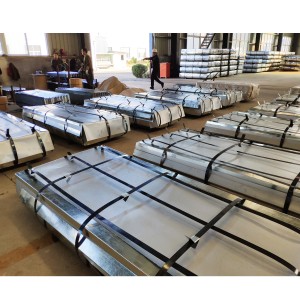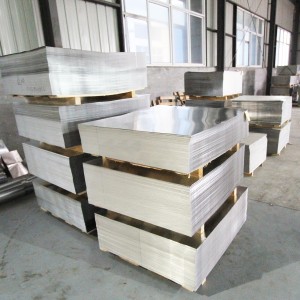Galvanized sheets can be divided into the following categories according to production and processing methods:
(1) Hot dipped galvanized steel sheet. Thin steel sheet is immersed in a molten zinc bath to make a thin steel sheet with a layer of zinc adhering to its surface. At present, the main use of continuous galvanizing process production, that is, the rolls of steel continuously immersed in molten zinc plating bath made of galvanized steel;
(2) alloyed galvanized steel. This steel plate is also manufactured by hot dipping, but immediately after leaving the tank, it is heated to about 500 ℃, so that it generates a thin film of zinc and iron alloy. This type of galvanized steel sheet has good paint adhesion and weldability;
(3) Electro-galvanized steel sheet. Manufacturing this galvanized steel sheet by electroplating method has good workability. However, the coating is thin and the corrosion resistance is not as good as that of hot-dip galvanized sheet;
(4) Single-sided and double-sided poorly galvanized steel sheet. Single-sided galvanized steel sheet, that is, galvanized only on one side of the product. It has better adaptability than double-sided galvanized sheet in terms of welding, painting, anti-rust treatment and processing. In order to overcome the shortcomings of single-sided uncoated zinc, there is another kind of galvanized sheet coated with a thin layer of zinc on the other side, that is, double-sided differential galvanized sheet;
(5) Alloy and composite galvanized steel sheet. It is made of zinc and other metals such as aluminum, lead, zinc and other alloys and even composite plated steel. This kind of steel plate has both excellent rustproof performance and good painting performance;

In addition to the above five, there are also colored galvanized steel, printed and painted galvanized steel, PVC laminated galvanized steel, etc.. However, the most commonly used at present is still Hot Dip Galvanized Plate.
The appearance of galvanized steel
[1] Surface state: Galvanized Plate due to the coating process in the treatment of different ways, the surface state is different, such as ordinary zinc flower, fine zinc flower, flat zinc flower, no zinc flower, and phosphate treatment of the surface and so on. The German standard also specifies the surface level.
[2] Galvanized sheet should have a good appearance, there shall be no defects harmful to the use of the product, such as no plating, holes, rupture, as well as slag, more than the thickness of the plating, abrasion, chromic acid stains, white rust, and so on.
Mechanical properties
[1] Tensile test:
Indicator of galvanized thin steel sheet (unit: g/m2)
JISG3302 Code Z12 Z18 Z22 Z25 Z27 Z35 Z43 Z50 Z60
Galvanized amount 120 180 220 250 270 350 430 500 600
ASTMA525 Code A40 A60 G60 G90 G115 G140 G165 G185 G210
Galvanized amount 122 183 183 275 351 427 503 564 640
① Generally speaking, only structural, tensile and deep-drawing galvanized sheets are required to have tensile properties. Structural galvanized sheet is required to have a yield point, tensile strength and elongation, etc.; tensile only requires elongation. Specific values see “8” in this section of the relevant product standards;
② test method: the same as the general thin steel test method, see “8” provided by the relevant standards and “ordinary carbon steel sheet” listed in the test method standard.
[2] Bending test:
Bending test is the main project to measure the process performance of sheet metal, but the national standards of various galvanized sheet metal requirements are not consistent, the U.S. standard, in addition to structural grade, the rest do not require bending and tensile tests. Japan, in addition to structural grade, building corrugated sheet and general corrugated sheet other than the rest are required to make the bending test.

Galvanized sheet corrosion resistance has two main features:
1, the role of the protective coating
In the galvanized surface to form a dense oxide film
2, when for some reason scratches in the zinc coating, the surrounding zinc used as a cation to inhibit the corrosion of iron.
Post time: Feb-15-2025






